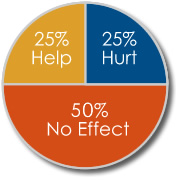









The Lasater Institute
Scott Lasater
President
Lasater Institute for Systematic Innovation
For the last decade, Scott has been known around General Electric as "The guy who taught Six Sigma process improvement and innovation to Jack Welch (CEO, General Electric)." He has trained over 5,000 business leaders internationally.
In the last five years alone, his students have saved in excess of $500 Million for their own organizations, patented several innovations, and have literally become "rock stars" within their organizations.
His primary focus has been developing and coaching leaders and employees at all levels of an organization to become scientific detectives – "myth busters" who use systematic investigation methods to generate their own best ideas and theories, and then prove fairly and objectively what really works and what doesn't. The real experts who live closest to the process are equipped and empowered to determine which theories, beliefs, practices and business assumptions are really true, and which prove to just be urban legends – "myth busted".
Scott has worked closely with the legendary manufacturing consulting group formed by members of the original Toyota Autonomous Study Group. This study group, lead by Taiichi Ohno himself, is credited with originating and developing the Toyota Production System. Part of his role at GE was to lead the effort to completely integrate all Lean and Six Sigma methodologies and train process improvement change agents around the globe in this new unified system.
Other significant background in flow optimization came through applications of his extensive training in the Theory Of Constraints, personally led by Dr. Eli Goldratt, author of the classic best-seller, The Goal: A Process of Ongoing Improvement. (NOTE: It’s no accident that the President of Toyota recently made this book required reading for all employees.)
At Duke University, Scott earned a degree in Psychology, followed by a Masters Degree in Applied Industrial Statistics from the University of Tennessee. He has trained and implemented business innovation, financial optimization, Lean, Six Sigma, and statistical methods for a variety of manufacturing and non-manufacturing operations -- from the Automotive, Chemical, Plastics and Service Industries to Healthcare, Government, and Financial Services.
This includes such organizations as
Intel, Wal-Mart, General Motors, Colgate-Palmolive, Navistar, Quiznos, Nestle, Regal-Beloit, Pardee Homes, Rheem, Carrier, ManPower, Science Diet (Hill’s), Indiana Department of Transportation, City Government of Fort Wayne, Indiana, City Governments of Salem and Albany, Oregon, American Red-Cross, Sysmex America, Parkview Hospital, Lutheran Hospital, Heart Center Medical Group, and The Cleveland Clinic.
Most disturbing, however, may be his background as a professional drummer and stand-up comedian.
What is Lean Six Sigma
Jack Welch, in his recent book, WINNING, describes it as, "One of the greatest management innovations of the past quarter-century and an extremely powerful way to boost a company's competitiveness…Nothing compares to the effectiveness of Six Sigma when it comes to improving a company's operational efficiency, raising its productivity, and lowering its costs."
Lean Six Sigma is about optimization and innovation across the entire enterprise — not "just for quality" or "just for manufacturing". Pioneered by Motorola and enhanced by GE, Lean Six Sigma is simply science applied to business…any business or organization.
Senior Executives set the strategic objectives and drive accountability with key performance metrics — needles on the corporate dashboard to indicate how well efforts are progressing. But are their employees armed with the latest, state-of-the-art scientific tools and techniques for discovering HOW to actually get those needles moved — quickly and effectively?
What will work? What won't?
 In a typical performance optimization effort, ideas regarding "what to change" tend to fall into the following categories:
In a typical performance optimization effort, ideas regarding "what to change" tend to fall into the following categories:
25% of the ideas HELP performance
25% of the ideas HURT performance
50% have NO EFFECT (thus, waste time and resources)
...and how many great ideas will the traditional approach miss altogether?
Lean Six Sigma provides a systematic methodology for change agents, often known as Black Belts and Green Belts — who are trained as scientific detectives — physicians to detect, diagnose and cure the most strategic, value-generating product or service delivery systems within and across enterprises. Organizations deploying Lean Six Sigma have seen enormous impact to the profitability and growth of both their internal and external customers.
Employees at all levels of the organization will learn how to become “myth busters” who use systematic investigation methods to stimulate and gather the best ideas and theories, and then prove fairly and objectively what really works and what doesn’t. The real experts who live closest to the process figure out which theories, beliefs and practices are really true, and which prove to just be urban legends – “myth busted”.
These scientific investigation tools and techniques for eliminating waste while driving speed and growth have again and again proven to fill essential gaps in employees’ detective-work capabilities -- making good detectives into great detectives, good employees into great employees, and good leaders into great leaders.
This Evidence-Based Management approach is as much about developing future leaders as it is about creating improvements. In his book, WINNING, Jack Welch emphasized, "Perhaps the biggest but most unheralded benefit is its capacity to develop employees into a cadre of great leaders."
Why? When an employee exhibits leadership, it means he/she has accepted the challenge of helping an organization move from one paradigm of working to another. Changing how we work means changing our processes. Evidence-Based Management provides the concepts, methods and tools for improving these processes. Thus, it gives employees the strategy, methods and tools for changing their organizations. This key skill has been missing from most leadership development programs.
Companies engaged in Lean Six Sigma have found that THIS is where the action is -- the laboratory where leadership traits are developed, practiced, tested, and proven. Driving change without any direct authority is one of the hardest things to do in a business environment. It’s one of the ultimate tests of an employee’s leadership skills and one of the greatest personal growth experiences an employee can have. Those who are the most successful at driving change are indispensable, high-value assets.
Welch offers one final admonishment for employees considering this course:
"These days, with this being increasingly adopted by companies around the world, you can't afford not to understand it, let alone not practice it."
